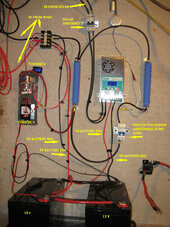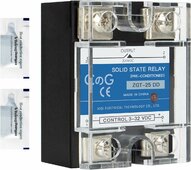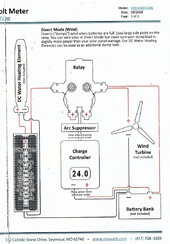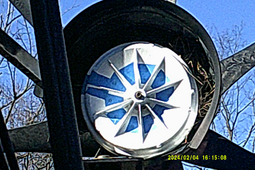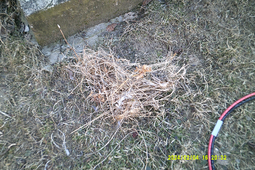Hogheavenfarm
Regulation Stifles Innovation
- Joined
- Jun 24, 2022
- Messages
- 432
Finally got a weekend with good wind to experiment with the turbine, and was able to confirm its stalling under load. I disconnected the cables and the stiff breeze immediately started the turbine spinning up. Reconnecting them slowed it right down and stalled it. So I need to prevent the turbine from trying to charge until the voltage is higher and it has spun up. The DC output cables go directly to the battery bank, and the controller is connected in parallel off the battery bank, so it does not interrupt the circuit, just senses the voltage and triggers the dump load if it gets too high.
I have an old PWM I could connect the turbine output to, but it has a 50v input limit, so would likely fry in a good wind. I can't spend alot on a special controller, is there some way I could hook up a voltage sensor and a solenoid to stall off the charging until it hits 24 volts or so? The solar controller on the same bank will take up to 100v, but that would probably fry as well, I know the turbine can put out more than that, and that would start to get on the expensive side.
I am running a 5ft swept area with 7 blades, and it will spin up in the wind but rarely continues very long.
I have an old PWM I could connect the turbine output to, but it has a 50v input limit, so would likely fry in a good wind. I can't spend alot on a special controller, is there some way I could hook up a voltage sensor and a solenoid to stall off the charging until it hits 24 volts or so? The solar controller on the same bank will take up to 100v, but that would probably fry as well, I know the turbine can put out more than that, and that would start to get on the expensive side.
I am running a 5ft swept area with 7 blades, and it will spin up in the wind but rarely continues very long.




